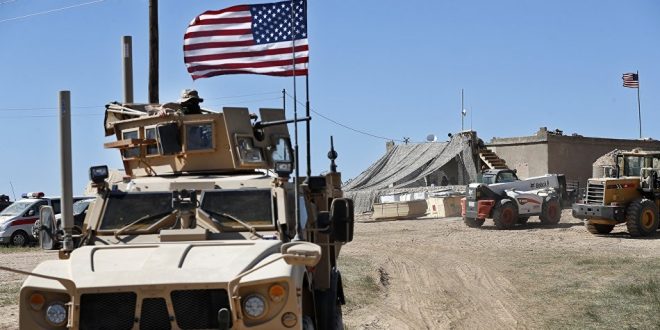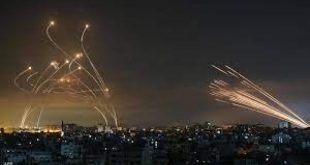Alwaght– Over the past few days, as the clashes intensified between the US-backed Syrian Kurdish forces and the ISIS terrorists, reports emerged about detention of a number of senior ISIS commanders at the hands of US-backed Kurdish fighters in Deir ez-Zor.
The Syrian Democratic Forces (SDF), a predominantly Syrian Kurdish force with a small number of Arab fighters, Friday night in a statement announced that Osama Uwayed al-Saleh, the top aide to Abu Bakr al-Baghdadi, the leader of ISIS, was captured by their forces in the northeastern Syrian city of Deir ez-Zor. The statement further read that al-Saleh was the ISIS security official in Raqqa and Deir ez-Zor and masterminded over 40 terrorist operations across the province.
On November 26, the SDF published a statement saying that they managed to capture Osama Uweid Ibrahim, the second most powerful man in ISIS organization. The Kurdish statement read that Ibrahim was hiding in a room at a house in Al-Tiyanah village in eastern suburbs of Deir ez-Zor. “He intended to blow himself up, but his sister prevented him. And then our forces caught him,” the statement read.
On November 15, Hawal Roni Walat, an SDF commander, told the British The Sun newspaper that Abu Baker al-Baghdadi’s special doctor, a British national, was caught escaping to Turkey. He also talked about the possible arrest of ISIS chief and other top leaders in Hajin town south of Deir ez-Zor province.
The ISIS leaders’ surrender to the forces close to the US in Syria runs counter to the policy of their fellow commanders in Iraq who adopted a strategy of resistance and fight to the death in various battles including in Mosul. During the operation for Raqqa, and even in recent operations in Deir ez-Zor, the US-led military coalition in its bombings even targeted the women and children of ISIS fighters. But how does it capture the senior commanders alive?
ISIS and US cooperation in Syria
One reason behind the ISIS leaders’ surrender to the US-supported militants is the behind-the-scenes agreements of cooperation between the terrorist group and Washington in Syria. Much evidence suggests secret and even brazen intelligence and logistical support of the US to the ISIS over the past few years in the Syrian battlefields. In some cases, when the terrorists were encircled or defeated by the Syrian army forces, the US-branded aircraft or unbranded ones air-dropped food, weapons, and medicines for them or launched heliborne rescue operations to transfer them to safety.
Colonel General Sergey Surovikin, the chief of the Russian forces in Syria, in June 2017 said that Moscow has “accurate intelligence” which show the ISIS terrorists struck a deal with SDF commanders in Raqqa for safe transfer to Palmyra in exchange for showing no resistance in the targeted city.
The Russian and Iranian officials several times blasted the US for links to the terrorist group in Syria. On November 24, the Russian Foreign Ministry Sergey Lavrov talked about US-ISIS alliance. “The United States of America treats the ISIS terrorist organization like an ally in the push for regime change in the Syrian Arab Republic,” he told the press.
As in December 2004 the US released Abu Bakr al-Baghdadi, originally Ibrahim Awad al-Badi, from Abu Ghraib prison in Iraq to reorganize a new terrorist group later, there are fears that the US wants to keep these commanders alive for future uses possibly in other places.
Many media reports talk about the US intelligence community’s accurate information about the whereabouts of ISIS leaders. Some sources even note that al-Baghdadi is harbored in the US military bases in northern Syria. On December 17 last year, the Turkish Yeni Safak news outlet claimed that that the US forces captured ISIS chief and are holding it in a military base on Syria’s soil.
The Turkish outlet, citing its sources in Syria, reported that the Americans caught al-Baghdadi in Iraq and transferred him to their base in Ras al-Ayn town in Hasakah province and from there to Rmelan. The Turkish website added that in addition to al-Baghdadi, Americans detained 7 other commanders in the extremist group.
In April 2017, the office of the secretary-general of the EU security and information authority said he had accurate information about al-Baghdadi detention in Syria’s north. The US government at the time denied the news.
In October 2017, BBC aired a documented report, titled “Raqqa’s dirty secret”, showing details of a deal that let hundreds of ISIS terrorists – including foreign militants – and their families escape from Raqqa, under the gaze of the US and British-led coalition and Kurdish-led forces who control the city.
ISIS leaders transferred to Afghanistan
Over the past two years, ISIS gained an increasing toehold in Afghanistan. The group elements’ operations against the security forces and civilians there considerably raised the violence rate in the war-torn nation. The phenomenon coincides with the tightened geopolitical rivalry of the US with regional parties like Russia, China, and Iran. The biggest gainer of ISIS expansion in Central Asia, close to the Chinese western regions such as Xinjiang province and Iran’s eastern borders, is the US. Washington finds a China-Russia-Iran axis cooperation against its interests in West Asia region.
The three countries, however, are aware of the American agenda. On September 20, the Chief of Allied Staff of Collective Security Treaty Organization (CSTO) Anatoly Sidorov stated that since early 2018, over 2,500 ISIS terrorists have been relocated to Afghanistan and Pakistan. Russia’s presidential envoy to Afghanistan Zamir Kabulov said information at Moscow disposal shows Washington allows in Afghanistan the ISIS militiamen fleeing Syria and Iraq.
ISIS relocation to Afghanistan has another privilege to the West. It will prevent the Western members of the organization from returning to their countries, mainly in Europe. A joint investigation by two news channels and a newspaper in Germany, published in March, shows that the SDF has in its prisons thousands of foreign fighters from tens of countries, with their fate is yet to be clear. A majority of home countries reject to allow them back home.
 WILAYAH NEWS VOICE OF THE GLOBAL AWAKENING
WILAYAH NEWS VOICE OF THE GLOBAL AWAKENING






